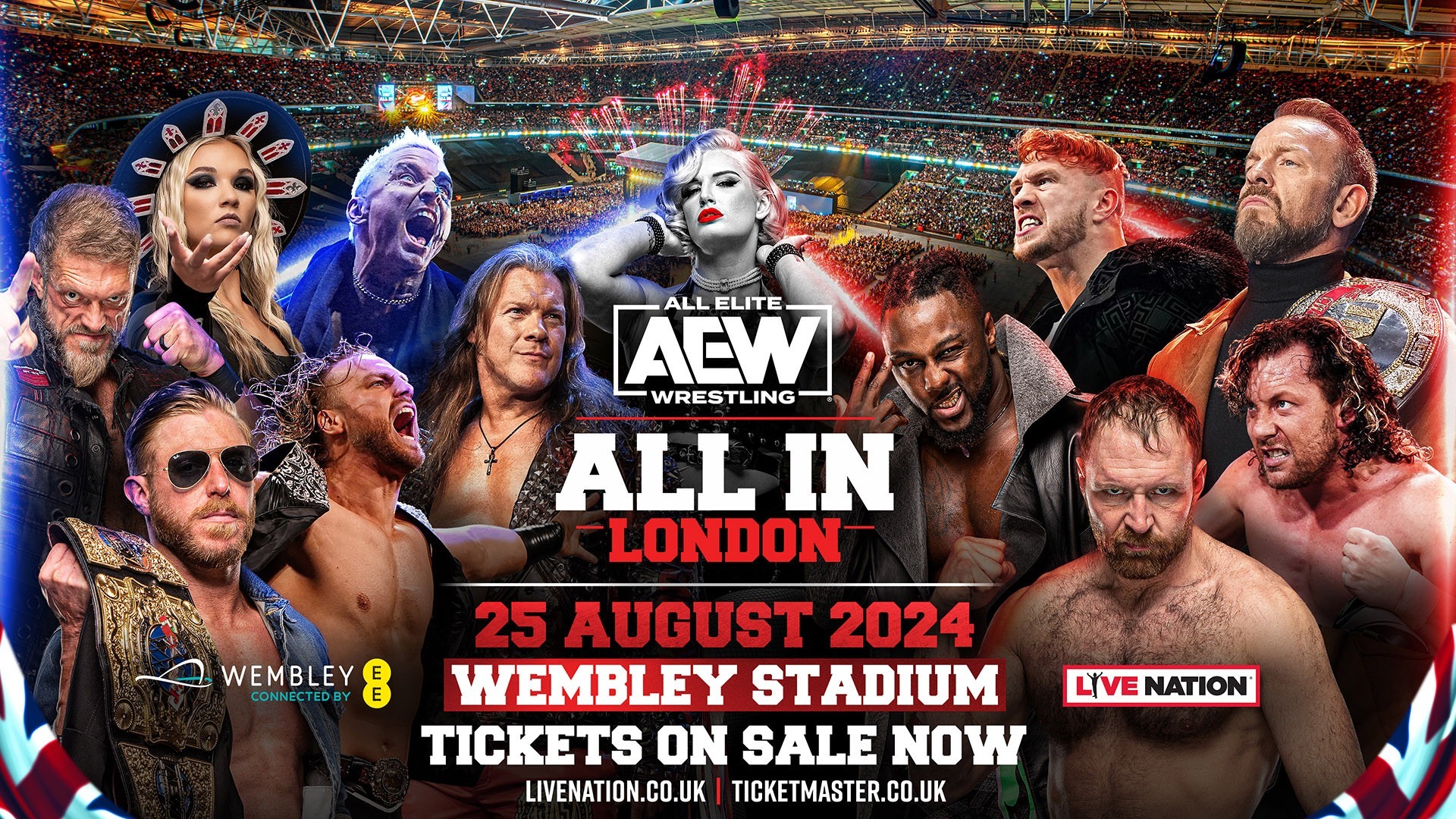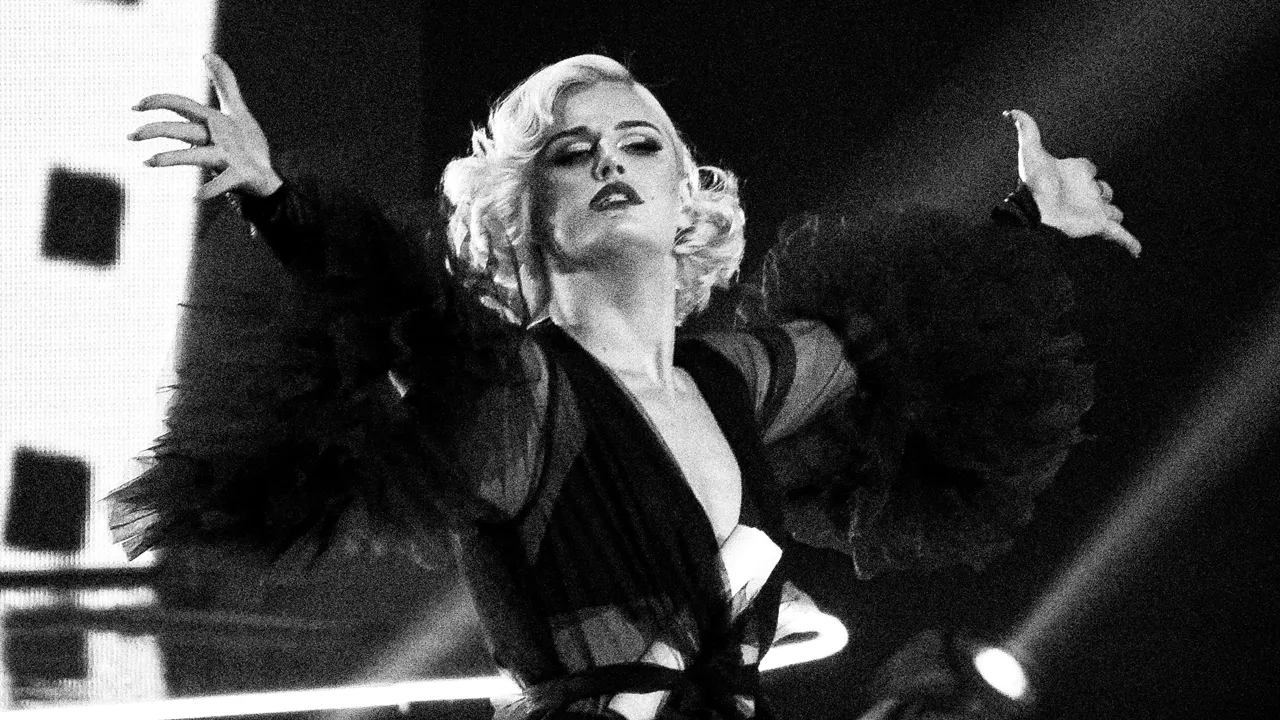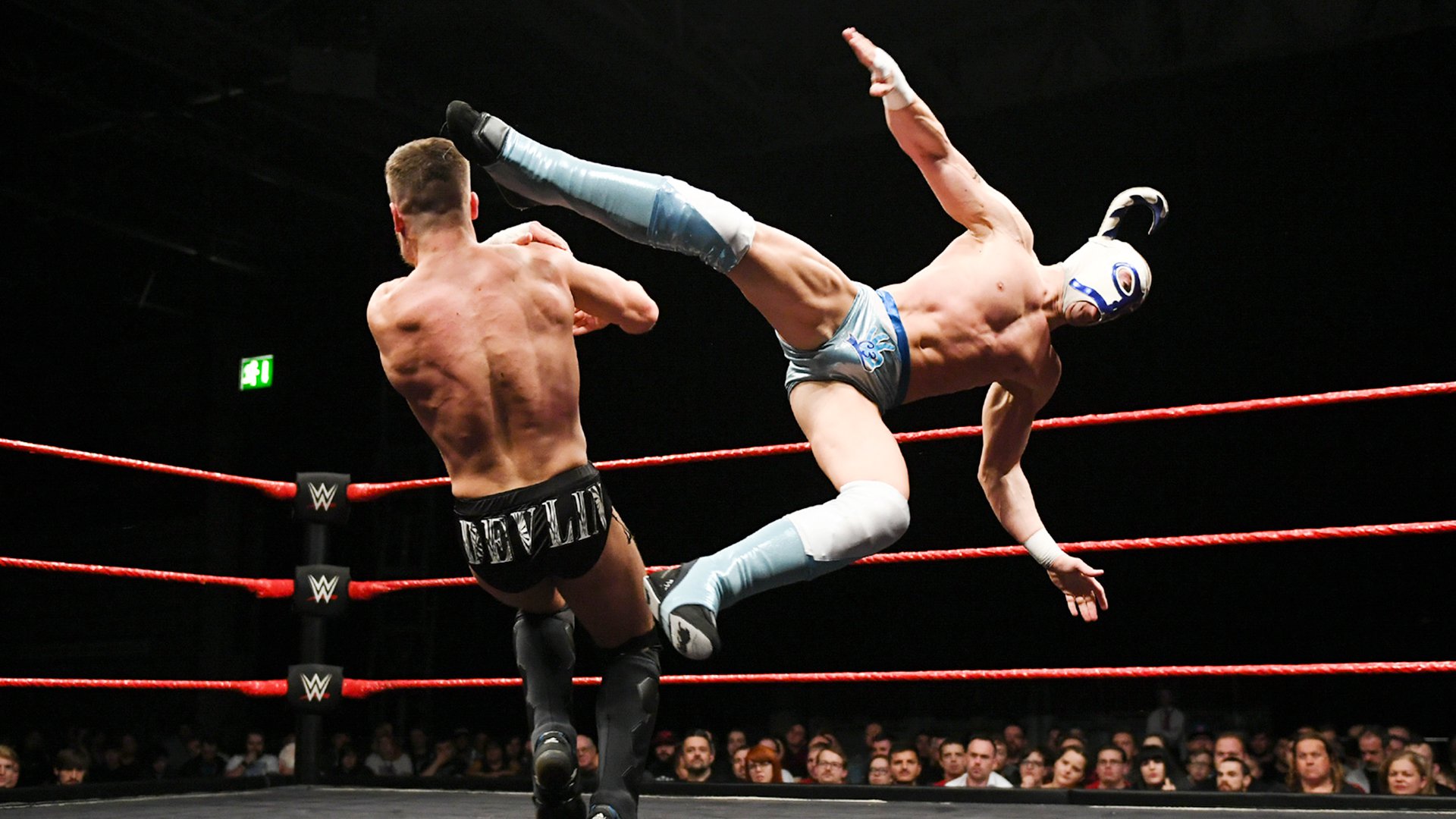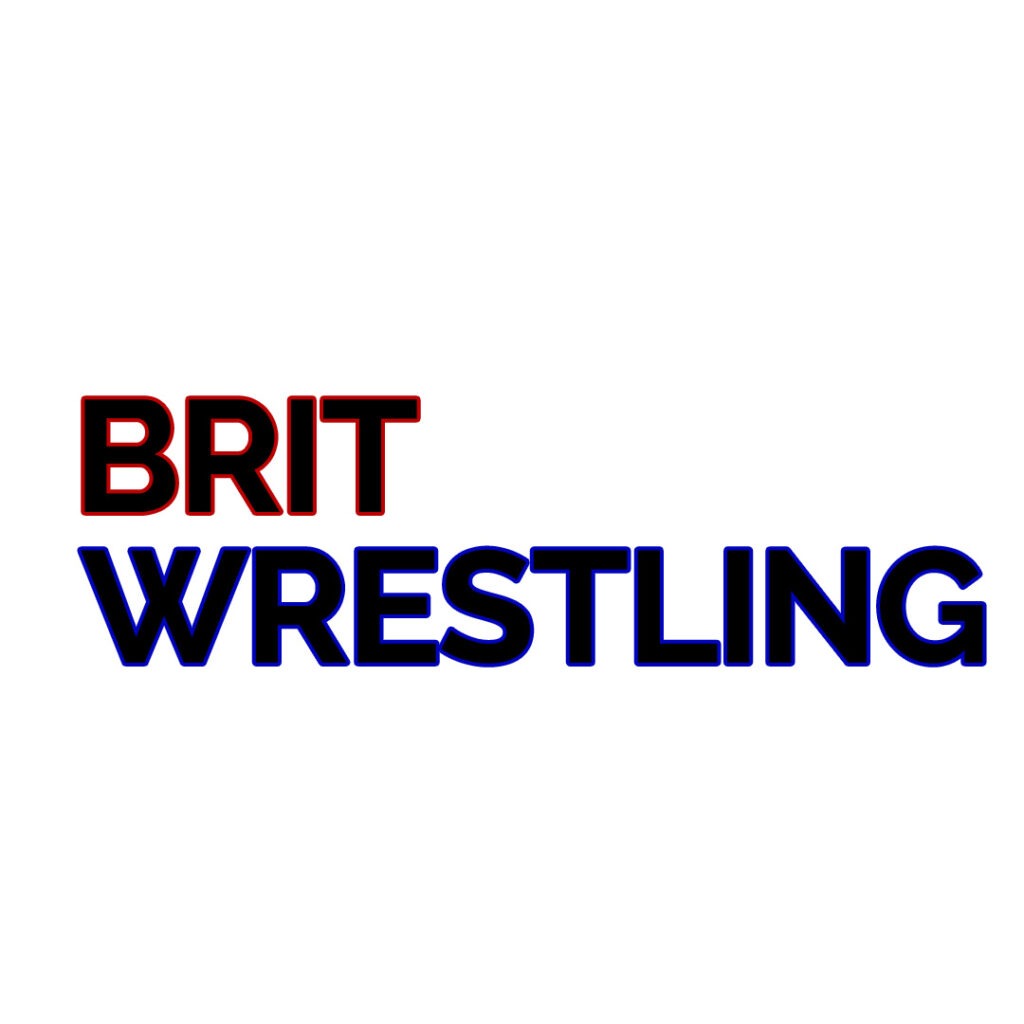There is a rich history of professional wrestling in the United Kingdom, going back nearly 150 years.
Originally a carnival attraction that built on the historic strongman competitions of the old days, the wrestlers would challenge people in the crowd to face them in a wrestling match in a bid to win money.
However, it soon became clear that these fights were fixed, and thus professional wrestling in the UK was born. These fixed fights were imported over from the United States, although the showmanship aspect of the sport can claim to be born in Europe and the UK.
Greco-Roman wrestlers began to take on ‘gimmicks’ or personas in the mid 1800s, which is something that was taken by pro-wrestlers after Cornish-American grappler Jack Carkeek brought the idea of the sport to England in the late-1800s.
Table of Contents
- 1800s: Jack Carkeek Brings Professional Wrestling To Great Britain
- 1900s: The Rise Of Georg Hackenschmidt
- 1910s-20s: Dip In Popularity And World War One
- 1930s: All-In Wrestling
- 1940s: Mountevans Rules And Joint Promotions Forms
- 1950: Wrestling Is Finally On TV
- 1960s: World Of Sport On ITV
- 1970s: The Rise Of Big Daddy
- 1980s: Decline And Cancellation
- 1990s-2000s: The Dark Ages Of British Wrestling
- 2010s: BritWres And A British Wrestling Revival
- 2017-2020: NXT UK, Speaking Out And The Pandemic
1800s: Jack Carkeek Brings Professional Wrestling To Great Britain
One of the earliest stars of British wrestling was an American named Jack Carkeek. He was a Cornish wrestling champion, and travelled to the UK to showcase his skills in the local fairground and strongman shows.
He brought showmanship and excitement to wrestling, creating the genre of Professional Wrestling in the UK almost by himself. Carkeek became famous for his wrestling skills, beating the punters to win their money in real bouts, mixed in with “worked” fights to make them think they had a chance.
However, he was later challenged by a young Russian lion, who would become Europe’s first big wrestling star.
Learn more about Jack Carkeek’s role in British wrestling history.
1900s: The Rise Of Georg Hackenschmidt
After forcing Carkeek to back out of their match, Georg Hackenschmidt became the first big wrestling star in Europe.
Managed by C. B. Cochran, he travelled across the UK and made wrestling a music hall act for the first time. Fans came out in droves to watch the Russian Lion beat all comers in the catch-as-catch-can wrestling style, as he became a massive draw across Great Britain.
Hackenschmidt became a massive star in the UK for a number of years. Heavyweights came from across the globe to face him, until he travelled to the US to set up a “match of the century” against Frank Gotch.
1910s-20s: Dip In Popularity And World War One
Along with Hackenschmidt, a lot of the main draws in the business left the UK for American in the early 1900s. The crowds soon dried up, and the music halls stopped putting on as many wrestling shows as they once did.
The business all-but died in the years following, due to the outbreak of the second world war. 5.1 million men were sent to fight in France, with nearly one million of those dying in combat.
This, combined with the country’s focus moving towards the war in Europe, saw sports pushed to the wayside. Even football was stopped between 1915 and 1918, showing how small of a chance professional wrestling in Britain had during the war.
1930s: All-In Wrestling
It would take until 1930 for wrestling to regain its popularity after the end of the First World War. The business had grown in popularity in the US, thanks to the success of the “Gold Dust Trio”, and it had started an uptick in interest in Great Britain too.
After the war, wrestling became incredibly boring. The growing size of wrestlers, mainly imported from the United States, saw matches going longer and longer. Due to their size, it became impossible to pin their shoulders to the mat, with no submissions allowed during that time.
This led to the creation of a new rule-set that would change wrestling in the UK forever. Atholl Oakley created “All-in Wrestling“. This introduced new holds and the idea of a submission-based wrestling match, something not seen before in Britain.
While it grew popularity immensely, All-in wrestling devolved into ultra-violent, bloody, hardcore-type matches, necessitating the creation of another, more universal ruleset.
Learn more about “All-In Wrestling” and how it all went wrong
1940s: Mountevans Rules And Joint Promotions Forms
Before the outbreak of World War II, wrestling was banned in London. Due to the violent nature of “All-In” rules, venues had their licences revoked if they were seen showcasing any professional wrestling events.
This continued until the sport was cleaned up by Lord Mountevens, who established a unified ruleset for the country to follow. The Admiral-Lord Mountevans rules were introduced in 1947, and bear more of a resemblance to the rules of wrestling today, albet with various differences.
A year later, the biggest cartel of promotions in British History was formed. Dale Martin joining with a number of other regional promoters to form Joint Promotions.
Joint Promotions create a monopoly of professional wrestling in the UK. They agreed to rotate talent around the various promotions, while refusing to hire anybody who worked for a company outside the group. This gave the wrestlers very little bargaining power, handing even more power to the promoters.
1950: Wrestling Is Finally On TV
The 1950s was the first time that wrestling jumped from the music halls to people’s living rooms. Television sets finally became more affordable, as more and more families made the jump from radio into the visual medium.
As the usage of TV’s increase, so did the output. With TV stations looking for more and more content to sell to the masses, professional wrestling was given a chance in the spotlight.
While a match between Earl McCready and Percy Foster was shown on BBC in 1938, most fan’s first forray into that sphere in 1955. Francis St Clair Gregory took on Mike Marino on November 9th 1955.
Interest qucikly grew, and more and more matches were broadcast in the UK. This led to the annual tradition of putting on a special match, shown before the yearly broadcast of the FA Cup Final. This match was known to draw up to 20-million viewers, nearly half of the population in Britain at the time.
1960s: World Of Sport On ITV
1970s: The Rise Of Big Daddy
In 1972, Big Daddy came out of retirement. He wrestled in the decades prior, but found little success as a heavyweight. He moved into owning bars and nightclubs, before his brother Max Crabtree took over Joint Promotions.
While initially a “villain”, the general public quickly took him into their hearts. Big Daddy soon became a hero to the people, with his huge arms and huge belly becoming a fixture of Saturday afternoons.
Ratings went through the roof for World of Sport in this time. Millions tuned in to see Big Daddy in his weekly battles. Most notable of these was against Giant Haystacks. The two heavyweights clashed multiple times, with their biggest bout selling out Wembley Arena 1981.
While fans loved Big Daddy, his stardom affected the rest of the card. The more skilled, more technical wrestlers found their popularit wavering. They saw Daddy as making a mockery of the business, and claimed what he did wasn’t “real wrestling”.
Despite this being the height of wrestling’s popularity in the UK, the women’s wrestlers were left out. There were no women’s matches ever show on World of Sport, with both ITV and Max Crabtree refusing to allow lady wrestlers on TV.
Learn why ITV didn’t show any women’s matches on World of Sport
1980s: Decline And Cancellation
By the time the 1980s rolled around, fans had begun to tire slightly of the “Big Daddy Show”. His rise to stardom under the command of his brother Max had changed the face of wrestling in Britain.
The days of the ultra-technical, sport-like feel of the show was gone. These wrestlers still existed, but were pushed aside in favour of the theatrical super heavyweight bouts between Big Daddy and Giant Haystacks.
By the time 1988 rolled around, something had to change. ITV boss Greg Dyke made the call to cancel World of Sport, taking wrestling off ITV for good. This ended 24-years of continuous programming, and killed wrestling as a mainstream sport in the UK, possible forever.
The only wrestling show left on terrestial TV was on the Welsh-language BBC channel, S4C. This was called Reslo, and was the last place wrestlers like Big Daddy and Giant Haystacks could work on TV. It was run by Welsh legend Orig Williams.
Learn More About Why ITV Cancelled The Wrestling In 1988
1990s-2000s: The Dark Ages Of British Wrestling
After ITV stopped showing the wrestling, the business soon fell into disrepair. Live events still drew well with Big Daddy involved, but his star power soon wavered, and he retired in 1993.
With Daddy gone, so were the fans. Attendance fell. Any stars good enough went to the US, while any left either worked the circuits at holiday camps like Butlins, or struggled to make a living. Joint Promotions shut down soon after changing their name to Ring Wrestling Stars in 1992.
While the British promotions fell into obscurity, American wrestling became the most popular style in the UK. Starting in the 1990s, the WWE became the most-watched promotion in the UK, although it was stuck behind the Sky paywall for the bulk of it.
Summerslam 1992 from Wembley Stadium became one of the biggest shows in wrestling history, and the biggest in the UK until AEW All In in 2023. TNA also drew huge crowds in the UK in the 2000s, with their slot on Freeview channel “Challenge” making them convenient watching for wrestling fans.
Another channel, called “The Wrestling Channel” began showing classic British wrestling, as well as shows from the US. One showing of TNA Unbreakable 2005 inspired a young Will Ospreay to become a wrestler, showing US wrestling’s influence on the UK.
Companies like 1PW became popular, drawing thousands of fans with some big US talent involved, but usually ended up going bankrupt after scamming the fans.
2010s: BritWres And A British Wrestling Revival
After British wrestling’s drop in popularity, it received a resurgence in interest with the advent of what became known as “BritWres”.
In the 2010s, a number of companies sprung up and quickly gained popularity. Promotions like Progress, RevPro and ICW grew in stature, marketing themselves as a more “punk” style of wrestling.
In a more underground style, wrestling became somewhat cool again. At their peak, these shows drew over 4,000 fans at arenas like Wembley Arena and the SEC Hydro in Scotland.
These were some of the biggest shows in British wrestling history. It looked like British wrestling was back, and ITV soon took notice.
After a number of failed pilots, World of Sport Wrestling returned to Saturday evenings. The reboot lasted just one series, and featured stars like Grado, Will Ospreay and Wade Barrett.
Despite the incredible talent involved, ITV completely botched the show. It was a wrestling show for people who didn’t like wrestling, completely alienating the audience and dooming it from the word go.
However, the wrestling scene continued to grow, until it had its legs cut out from under it in with the birth of NXT UK.
2017-2020: NXT UK, Speaking Out And The Pandemic
The British wrestling revival came to a swift end, starting with the birth of NXT UK in 2017.
The company, a child promotion of the WWE, was set up to counter the World of Sport show on ITV. Wanting to remain a monopoly in Britain, WWE snapped up all the top talent they could from across the UK and Europe.
Notable stars like Tyler Bate, Pete Dunne and WALTER were all signed to WWE deals. This took the main events away of many different companies, and attendances quickly dropped.
WWE killed the UK indie scene during this time, although COVID and the Speaking Out Movement put the final nails in the coffin. Speaking Out in particular, which saw countless stars being accused of sexual assault, ended a lot of interested in the British wrestling.
Learn more about the death of British Wrestling in 2020.





